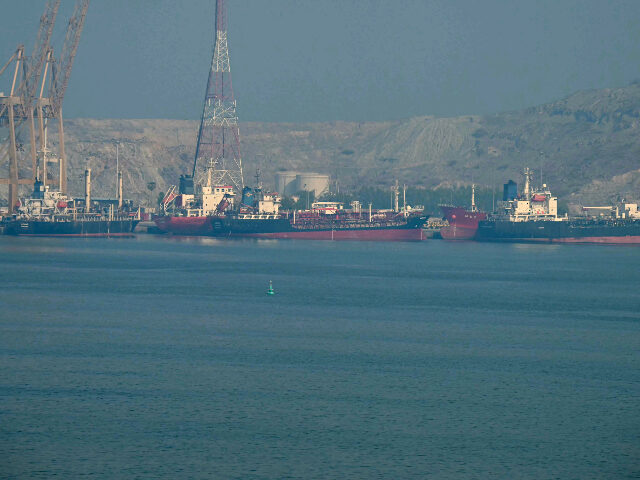現在の配送料金の概要
イスラエルとイランの間の緊張によって影響を受ける可能性のあるルートの配送料が大幅に高騰しています。例えば、6月には、料金が最大76%も増加しました。市場が地政学的な変化に反応するにつれて、これらのコスト上昇は、グローバルな政治情勢がより広範な影響を及ぼしていることを反映しています。 物流 そして 輸送 セクター。
停戦が輸送コストに与える影響
停戦の発表は前向きな一歩であるものの、多くの人が輸送運賃がどの程度まで落ち着くのか疑問に思っています。現時点では、専門家は慎重であり、大型貨物船が依然としてこの困難な状況において主要な標的であることを認識しています。テヘランが軍事作戦の一時停止を主張しているにもかかわらず、この地域の海上ルートには大きな不確実性が依然として存在しています。
最近の報告によると、アラブ首長国連邦(UAE)の苦境にあるホール・ファッカーン港は、ホルムズ海峡に近い戦略的な位置にあるため、不安が高まっているという。この地域は、国際的な輸送交通の膨大な量にとって非常に重要である。
ホルムズ海峡の危険
イランがこの重要な海峡の封鎖を脅迫または実行した場合、中東、インド、アフリカ間の広範囲な貿易に影響を与える海運の混乱が広範囲に及ぶ可能性があります。
- 上海からホール・ファッカーンへの配送料 40フィート換算ユニット(FEU)あたり前例のない$3,341に達し、5月のレートと比較して76%の大幅な上昇を反映しています。
- 貨物アナリスト 高い輸送価格は、貿易の流れにおけるリスクと不確実性の増大を示すことが多いため、物流の専門家は常に警戒を怠らないようにする必要があります。
慎重な輸送戦略
高まる恐怖に対応して、多くの shippers この地域の企業は予防的な措置を選択しました。Xenetaの最高海運アナリスト、ピーター・サンドが適切に述べたように、「荷送人はサプライチェーンの混乱に備えて、ここ数ヶ月で貨物を前倒しで積み込んでサプライチェーンを強化しています。」
この急増は、船舶が加速された速度で航行する必要があることを意味し、燃料消費量の増加、ひいては輸送費の高騰につながります。
燃料価格の力学
興味深いことに、輸送費が上昇しているにもかかわらず、原油価格は比較的低いままであり、紛争激化のシナリオに対応してコストが急騰するという通常の市場予測とは逆行しています。ただし、アナリストは、高い輸送費は潜在的な市場の変動に対する先行指標となる可能性があると警告しています。
海運業界の対応
これらの課題の中で、Frontline のような企業は厳しい姿勢を取り、自社の船舶がホルムズ海峡を航行することを求める契約を拒否しています。このような決定が続くと、輸送のロジスティクス費用がエスカレートする可能性があります。 オイル グローバルに。
前進:主要海運会社の決定
注目すべきは、マースクやHapag Lloydのような大手企業がホルムズ海峡経由の航路を維持することを選択しており、他の企業にとっても先例となる可能性があることです。ここで操業を維持することは、イランがさらなる挑発行為を行うのではなく、平和的な解決を選択すると仮定すれば、輸送運賃の安定化に役立つ可能性があります。
インドにおける貨物安定化の傾向
別の面では、インドの商務省が驚くほど安定した輸送レートを報告していますが、海峡が閉鎖された場合、潜在的な混乱に対する懸念が残っています。インドの原油輸入の約65%がこの重要な通路を通過するため、ここでの脅威は世界のエネルギー市場全体に大きな波及効果をもたらす可能性があります。
インド商務省からの警告
情勢不安が悪化すれば、レートが「天井に達し」、インドと中東のパートナー間の貿易力学の基盤を揺るがす可能性があります。これほどのリスクがあるため、物流の専門家はこれらの動向を注意深く見守ることが不可欠です。
より広範な経済的意味合い
これまでのところ、紛争のエスカレーションは限定的であるため、石油や貨物輸送への影響は、決定的な軍事行動後の想定されていた終末的なシナリオとは対照的に、いくらか管理可能な範囲にとどまっています。イランが拡大した紛争に深入りすることなく、計算された限定的な対応をとったことが、潜在的な転換点として注目されています。
金融市場への影響
金融市場は好意的に反応し、ダウ・ジョーンズやS&Pなどの指数は緊張緩和を受けて上昇しました。この反応は、グローバルな物流、輸送レート、地政学的イベントが国際的な金融の健全性と密接に結びついていることを示しています。
配送力学に関するまとめ
要するに、海上輸送運賃と地政学的な問題との複雑な関係は、どれだけ強調してもしすぎることはありません。和平の努力が続けられている現在においても、輸送ルートと運賃をめぐる不確実性は依然として最も重要な問題です。これらの傾向がどのように進化していくかが、グローバル規模での物流オペレーションにとって非常に重要になります。物流の専門家と直接連携し、次のようなプラットフォームを活用することを念頭に置いてください。 GetTransport.com は、これらの課題の中で、汎用性があり、手頃な価格の貨物輸送ソリューションを提供できます。
物流の世界では、二次的なレポートや分析も貴重な洞察を提供しますが、個人的な経験に勝るものはありません。GetTransport.comでは、お客様のニーズに合わせた効率的な貨物輸送計画を確保し、コストと利便性に配慮することで、不必要な費用や不満を招くことなく、情報に基づいた選択をすることができます。の強力なオファリングをご覧ください GetTransport.com あなたのあらゆる輸送ニーズにシームレスに対応します。 予約する at GetTransport.com.

 イスラエルとイランの地政学的緊張が落ち着き、高騰する海運コスト">
イスラエルとイランの地政学的緊張が落ち着き、高騰する海運コスト">